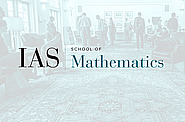2005-2006 seminars
Jul
11
2006
Special Computer Science/Discrete Mathematics Seminar I
The learnability of Quantum States
11:00am|S-101
May
23
2006
Lie Groups, Representations and Discrete Mathematics
On Margulis' Normal Subgroup Theorem
2:00pm|West Building Lecture Theatre
May
16
2006
Computer Science/Discrete Mathematics Seminar II
Randomness Reduction in Some Results of Asympotic Geometric Analysis
Shiri Artstein
10:30am|Dilworth Room
May
15
2006
Computer Science/Discrete Mathematics Seminar I
New Connections Between Derandomization, Worst-Case Complexity and Average-Case Complexity
Danny Gutfreund
11:15am|Dilworth Room
May
09
2006
Computer Science/Discrete Mathematics Seminar II
On the Minimal Density of Triangles in Graphs (continued)
10:30am|S-101
May
08
2006
May
02
2006
Lie Groups, Representations and Discrete Mathematics
Almost Normal Subgroups of Lattices
George Willis
2:00pm|S-101
May
02
2006
Computer Science/Discrete Mathematics Seminar II
On the Minimal Density of Triangles in Graphs
10:30am|S-101
May
01
2006
Apr
25
2006
Lie Groups, Representations and Discrete Mathematics
Relative Property T in Lie Groups and their Lattices
Yves de Cornulier
2:00pm|S-101
